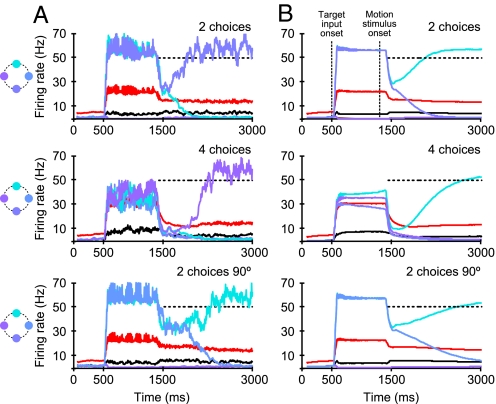Fig. 3.
Simulated temporal evolution of population-averaged firing rates at zero motion coherence for single trials (A) and trial average over 1,000 network simulations (B). Red and black lines denote inhibitory and nonselective pools. Selective pools for single trials are colored according to the target illustrations (Right). For the trial average (B), the “winning” neural pools were averaged (cyan). The “losing” pools were averaged according to their inputs and relative target location to the winning population. During the target phase, the activity of the neurons representing the target-selective populations are increased to, on average (800- to 1,300-ms interval), 57 Hz in the 2-choice and 90° case compared with 36 Hz in the 4-choice case. This difference persists during the dip after the onset of the motion stimulus. Therefore, in the case of 4 targets the decision process starts at lower firing activity. The slope of the ramping activity is on average smaller in the 90° case (Bottom) than in the standard 2- (Top) and 4-choice (Middle) conditions, whereas its starting point is similar to the 2-choice case.

